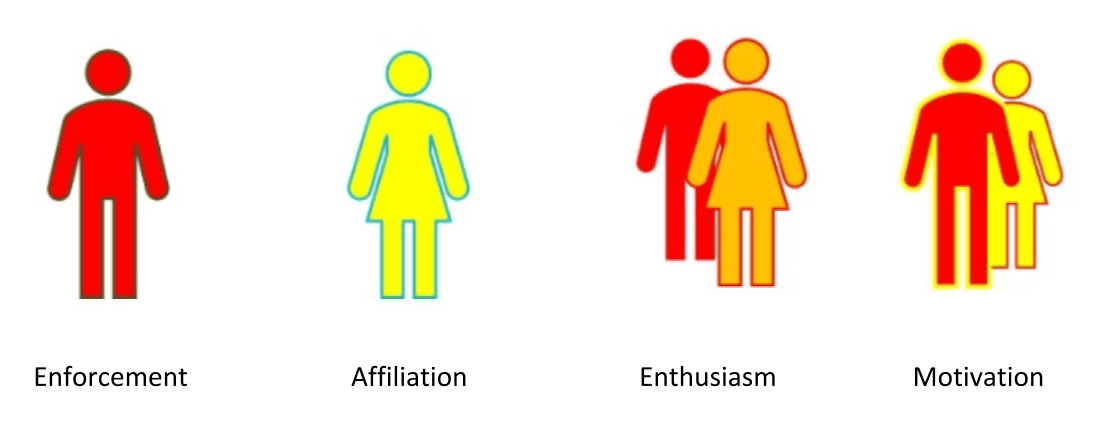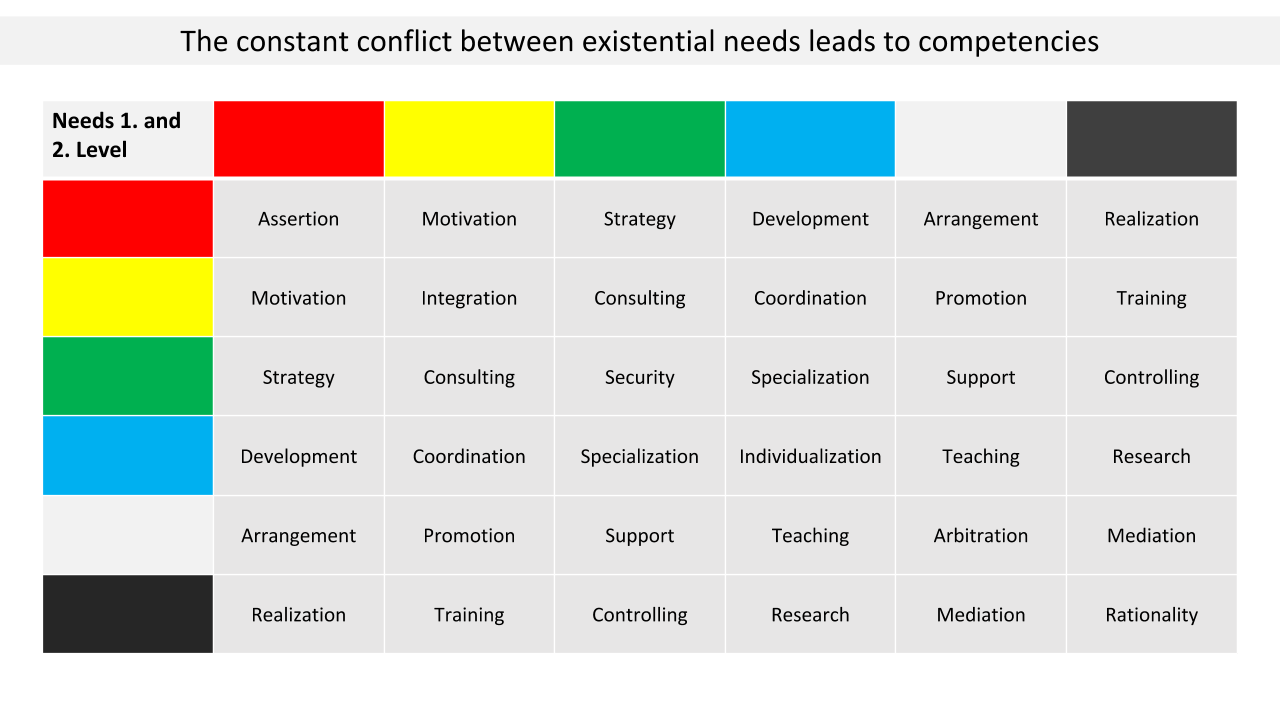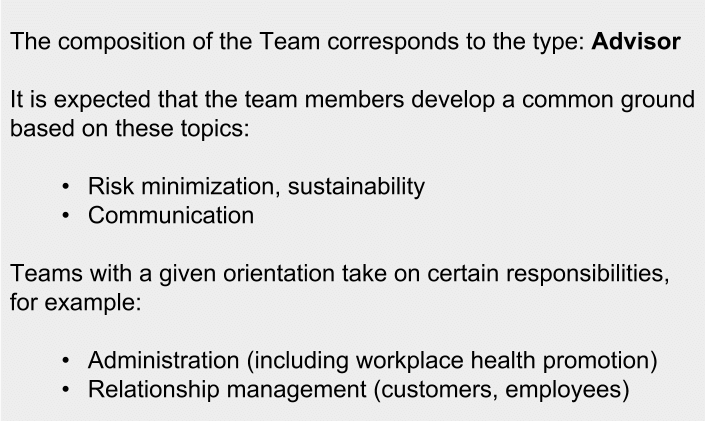Team skills
The competencies of a team are more than the sum of their individual strengths. Let's take Amanda, who can communicate super well, and Andreas, who knows how to assert himself powerfully.
Affiliation: Amanda is friendly. She likes to talk and does a lot of talking. She creates an atmosphere of togetherness. She is not interested in the question of whether this will achieve anything. She is interested in community.
Enforcement: Andreas says where things are going and calls on colleagues to subordinate themselves to him or to avoid him. He is not interested in the question of whether the others will join in. He is interested in getting things moving.
If the two succeed in attuning to each other so that they influence each other, new competencies will result.
Enthusiasm: Andreas shows Amanda what visions she can convey to her colleagues, so that their common ground is focused on something great.
Motivation: Amanda shows Andreas how he can address his colleagues in such a way that they understand him and are willing to follow him.

Usually a group is much more colorful than in this example. Because there are more than these two basic competencies anchored in ourselves and in the team. This "automatically" leads to a multiplication of strengths. The task is to open up these automatisms, because we tend to leave out people who are different from us as strangers.
Accepting being different and using it together
Teambuilding measures are offered because they work and have positive effects. This does not necessarily have to be a trip to the mountains or a survival camp.
Even a workshop in which the different profiles are discussed can release enormous forces, because the often conflicting motivations of the team members have a positive effect when everyone has learned that everyone can support the others with his or her own individual character.
Once they have experienced the good sides of diversity, the team members learn in their daily work what skills their colleagues bring with them, precisely because they have a different, natural repertoire.
Otherness is also expressed in the way we communicate. Amanda is far too funky for Andreas. Andreas is much too loud for Amanda. This "much too" is put into perspective when both recognize why or why one is loud and the other is funky.

With a little experience, we can see from the language of our partners which needs move them.
A Good Deal: Give and Take
The basis for good solutions is known from conflict management: a balanced give and take should lead to all participants winning.
All basic needs want something and offer something and like to take:
Red: wants to make progress and offers assertiveness and takes
assistance
Schwarz: wants to recognize and offers rational competence and takes
information
Yellow: wants to belong and offers integration competence and takes
talks
Green: wants to protect something and offers security competence and takes
support
White: wants to empathize
and offers emotional competence and takes openness
Blue: wants to be in demand and offers quality competence and attracts
attention
Recognizing, accepting, giving and taking each other happens in good teams and families unasked and in a naturally flowing way, because everyone feels and knows and has experienced that everyone wins with it.
Common goals and distribution of tasks
Competences serve to accomplish tasks that serve a common goal. With quite different characters, it is important to describe clearly what is to be achieved together. In the sense of motivation diversity, it is about integrating these basic needs, i.e. describing something colourful .
We want to achieve our goal, because it...
Red: fits our visions and brings us forward
Black: logical and useful
Yellow: brings us closer together
Green: our future secures
White: is also emotionally
responsible
Blue: to create something special that we can be proud of
We thus define comprehensively what it is good for all those involved and thus also for all our personality traits to bring our competences and efforts into the joint action. The expected effect is that each team member will also positively serve unconscious resistance, precisely because all sides have been taken into account.
In the next step, the tasks can be distributed in such a way that the competencies of two or three team members complement each other.

Teampersonality
Only rarely is a team so balanced that all these competencies come together. This is not always necessary, because in practice teams are often used for specific tasks and team members are selected according to their professional knowledge. A team that takes care of complaint management typically has other members than one that is supposed to take care of the reorganisation of data storage.
But even in teams with a clear focus on purpose, it makes sense to have as broad a range of competencies as possible. Only the "dosage" changes. The IPM team profiles calculate in which direction the team tends as a community.
This tendency can be calculated from existing motivation profiles of the members of a team and described in the team profile, for example:

To this team personality the team members can be represented in the matrix in the relations to each other. For the first orientation, the individual quadrants describe the basic competencies of development (innovation, performance), motivation (realization, communication), consulting (service, support) and specialization (order, controlling). In the middle, near the zero points, the competences planning and coordination are shown.

At first glance, it becomes clear that Jerim Uffer and Wübkedine Bünting complement the team personality with special skills. When it comes to questions of quality (Uffer) or communication (Bünting), these two are particularly suitable.
A good team dynamic uses the common will (to be active in planning) and combines this with the special competences of individual team members. The purpose of such team representations is to make people aware of this.